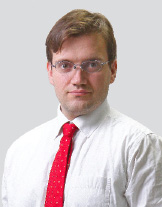作者簡介:
郭史蒂夫 歐洲專利律師

現任:
北美智權教育訓練處 /歐洲專利律師
經歷:
- Bryers事務所 歐洲專利律師
- Bugnion SpA事務所 歐洲專利學習律師
- Notabartolo & Gervasi事務所 歐洲專利學習律師
- 歐洲專利局 實習生
- 英國牛津大學生物化學、細胞與分子生物系,生化碩士
- 英國倫敦大學瑪莉皇后學院,智財管理碩士
|
世界上近乎所有的國家都在授予專利這個壟斷的權利時,也試圖盡可能的平等對待其他人。各國領導人與其專利局都充分的理解到,在現今的環境下,企業需要投資大量的時間與金錢,才能申請到專利。他們也明白在現今全球化的世界裡,要激勵當地企業成長與創新的最佳方法之一,就是鼓勵他們經由其智慧財產的保護來尋求利益。
這就是為什麼專利審查授證系統會設有許多辦法來幫助專利申請人,激勵他們申請或保護他們的利益,或是盡可能有彈性的配合申請人的需求。
用來激勵申請人的最典型例子,就是降低專利的申請規費。在美國,較低的專利申請費率通常僅適用於較小的機構以及學術單位。在歐洲,主要的優待方式是給特定企業較低的專利申請規費,或是給予退稅,亦或是讓他們利用申請規費的證明來抵稅等,來幫助他們取得智慧財產的保護。
另一個例子是提供申請人其他形式的智慧財產權,例如授予(未經實體審查即授證的)新型專利與實用新型專利,但相對於發明專利來說,他們的申請範圍與專利期限都是較侷限的。
另一種幫助申請人的方式,就是讓專利審查獲證的程序盡可能的有彈性。有些申請人會認為他們需要依據專利獲證程序的結果,才能做出商業上的決定或是接受某種商場現實。用一個典型的例子來說明,申請人相信需要三至四年,甚至更長的時間才能等到專利獲證,因為專利局在送出檢索或審查報告前,需要花費二到三年來進行前案搜索與審查工作。專利獲證所需的時間,對於申請人來說是很重要的,這是因為相對於專利申請書來說,獲證的專利是被推定為有效的。其間的差異在於獲證的專利,可以用來提告侵權者,或當專利權人在進行授權或轉讓談判時,也會大幅影響專利權人的談判能力。因此,對於專利申請人來說,必須知道在某些狀況下,申請程序是可以依照申請人的商業需求,加快速度或放慢腳步進行的。
如上所述,依據他們的商業需求,申請人可能會想在最短的時間內得到專利的壟斷權力,而這可透過多種方式來做到。舉例來說,如果還沒有發現特定目標來使用這個專利,申請人就可以要求加速整個專利的申請獲證流程。在某些國家,甚至可以從申請日算起約12個月內,就完成整個專利的申請獲證流程。如果有特定的商業目標,申請人可以特別修改其專利內容來涵蓋該特定商業目標,或另外提出一個只涵蓋該特定商業目標的專利申請案,以加速審查程序。申請人通常可以藉由限縮其專利保護範圍以針對特定目標的方式,來加速專利的申請程序並減少其阻礙,以提早獲證。
還有其他的狀況是,申請人可能需要延遲其申請案,以便有足夠時間來決定是否繼續該申請案或是如何改變他的智慧財產。這種狀況可能發生在申請人還不能確定他的智慧財產的價值,例如能決定該專案未來的相關重要商業會議將在一兩個月後才舉行,因此申請人需要延遲申請案的進度,直到未來整體專案價值的情況較明朗時再做決定。還有一個可能的情況是,申請人需要等待某些收入的取得,好來支付專利申請過程所需要的費用。
請注意某些截止日是不能夠延遲或改變的,這是因為專利局不願只成就申請人的獲益,而造成所有其他人的利益受損。這類的截止日,其中一種就是從專利申請日算起18到19個月的專利申請書公開日,另一種是專利申請人只可以在從第一次申請日算起一年內提出優先權的主張。
對申請人來說,重點就是他應該要讓專利獲證程序來符合他的商業需求,而不是讓專利獲證程序反過來替其做出商業上的決定。這就是為什麼委任一個好的專利律師/工程師,以提供最符合申請人商業需求的專業服務是非常重要的事了。當然,申請人理應積極的向專利律師/工程師諮詢可行的方案,或是解釋他自身的商業需求。而專利律師/工程師就該如大家期待的,憑此以及其專業判斷,就能夠建議申請人一些可行的選項,以及提供各種作法的優缺點分析。一旦申請人掌握了這些資訊,就可以決定要如何行動,以及採取能保護他的商業需求的最佳方式。
About the Author:
Stefano John, European Patent Attorney

Experiences:
- European Patent Attorney, Bryers
- Trainee European Patent Attorney, Bugnion SpA
- Trainee European Patent Attorney, Notabartolo & Gervasi
- Internship, EPO
|
Patent System and its Deadlines
Stefano John NAIP Education & Training Group / European Patent Attorney
The patent system in nearly every country in the world is directed to granting patent monopolies while trying to be as fair as possible to everybody else. The State authorities and patent offices understand well that in today’s environment, asking a company to obtain a granted patent requires a lot of time and investment. They also realize that in the globalized world, one of the best ways to incentivize local businesses to grow and innovate is by encouraging them to search for profits through protecting their intellectual property.
That is why there are ways to help the patent applicant to incentivize him to apply or to protect his interests or to allow the patent obtaining system to be as flexible to his needs as possible.
A classic example of incentivizing patent applications is by reducing the application costs. In the US, this is mainly done for the smaller corporation, academic institutions by reducing official fees. In Europe, this is mainly done by offering grants at specific businesses to help them apply for IP protection or tax rebates or tax discounts for businesses which can prove they utilize patent protection.
Another example is the availability of other forms of IP rights such as New Model rights and Utility Models, but they are restricted in their application and duration as opposed to patent rights.
Another way of helping the Applicant is by making the patent obtaining process as flexible as possible. Some Applicants may feel that they need to take commercial decisions or accept certain commercial facts as dictated by the patent obtaining process. A classic example would be that the Applicant believes he has to wait 3-4 years, or even longer, to obtain grant of the patent because the Office has not sent out a search or an examination report yet and this will take time up to 2-3 years. The time taken to obtain grant of the patent can be very important to the Applicant, because the grant of the patent means that the patent is presumed to be valid, as opposed to a patent application. The difference means that a granted patent can be used against infringers or affect the negotiating power of the patent owner when negotiating for a license or assignment. It is therefore important for Applicants to recognize that in certain circumstances, the process can be sped up or slowed down to cater for the Applicant’s commercial needs.
As seen above, the Applicant may want to establish the patent monopoly rights as quickly as possible. There are alternative mechanisms to achieve this and they depend on the commercial needs. For example, if there is no specific target to then use the patent against, one can request faster processing of the entire application to grant. In certain countries, one can get the entire process from filing the application to grant in about 12 months. If there is a specific commercial target, the Applicant can either amend to specifically cover the specific commercial target or file a separate application which only specifically covers the specific commercial target. By limiting the scope of the protection, one generally obtains grant of the application for that specific part of the patent application in much quicker periods and with less obstacles.
In other cases, the Applicant may need to delay his decision on whether to continue with or how to change his IP. This may be for example because the Applicant is not sure of the value of his IP at that specific moment (because for example a related important commercial meeting to decide on the future of the project may occur in a month or two) and therefore would like to delay his decision until the future value of the entire project may be clearer. Another example may be because he needs to await some payment before he can then proceed with paying for the necessary costs involved in proceeding with the application.
Please note that there are some deadlines which unfortunately cannot be delayed or changed, because it would mean that the interests of everybody else would be sacrificed for the Applicant’s benefit and the patent office is not generally willing to let this happen. One such deadline is the deadline for publication of the patent application at 18-19 months from its first filing or the deadline where priority can only be claimed within 1 year from first filing.
The key for the Applicant is that he should expect that the patent obtaining process suit his commercial needs and not let the commercial decisions he takes be dictated by the patent obtaining process instead. That is why it is important to use the services of a good Patent Attorney/Engineer who knows and can advise the Applicant on which option would best suit the Applicant’s commercial needs. It may be necessary for the Applicant to actively enquire what options are available or to explain his commercial needs, but it would then be expected that the Patent Attorney/Engineer advise what are the options available and what are the advantages or disadvantages of each one. Once in possession of the information, the Applicant can then decide how to act and to best protect his commercial needs.
更多歷期精采文章,請參閱智權報總覽 >>
|